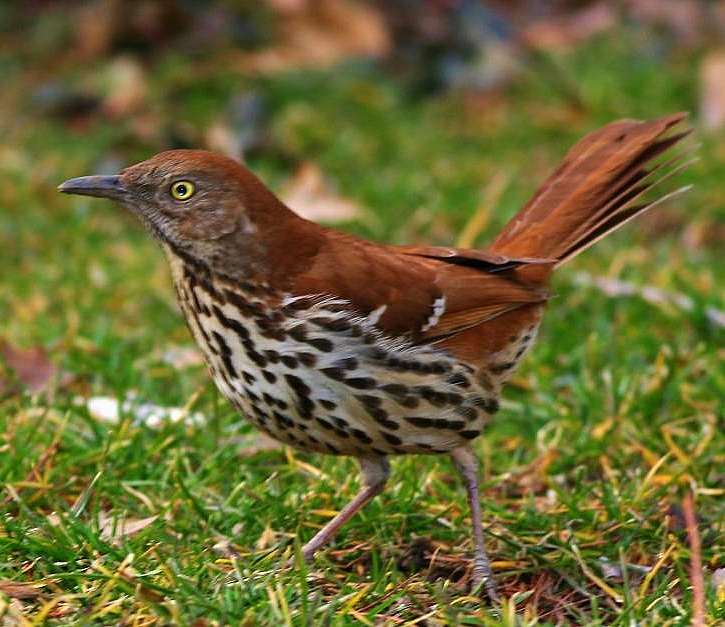Common name:
brown thrasher (en); sabiá-castanho (pt); moqueur roux (fr); cuitlacoche rojizo (es); rotrücken-spottdrossel (de)
Taxonomy:
Order Passeriformes
Family Mimidae
Range:
This species is found in southern Canada and the eastern United States, from Alberta and Minnesota to Maine and south to Texas, Louisiana and Florida. The more northern population migrate south to winter along the southern parts of the range.
Size:
These birds are 23-30 cm long and have a wingspan of 29-32 cm. They weigh 60-90 g.
Habitat:
They are mostly found in temperate scrublands and forest edges, but also in woodlands with cottonwood, willow, dogwood, American plum, salt cedar, hawthorn, pitch pine, or scrub oak. Occasionally they are also found in gardens.
Diet:
They mainly feed on insects and other arthropods, namely beetles, grubs, wire-worms, army worms, cutworms, tent caterpillars, gypsy-moth caterpillars, leafhoppers, treehoppers, cicadas, grasshoppers, crickets, wasps, bees and harvestmen, but also some lizards, snakes and tree frogs. They also eat fruits, seeds and nuts.
Breeding:
Brown thrashers are mostly monogamous, but there are some cases of mate-switching even within the same breeding season. They breed in March-July, with both sexes collaborating on building the nest, which consists of a bulky cup made of twigs, dead leaves, thin bark, grass stems, and rootlets. There the female lays 2-6 bluish or greenish eggs with reddish-brown speckles. The eggs are incubated by both parents for 10-14 days. The chicks are fed by both parents and fledge 9-13 days after hatching. Each pair can raise 1-2 broods per season.
Conservation:
IUCN status – LC (Least Concern)
This species has a very large breeding range. In Canada de population is estimated at 50.000-500.000 individuals, but represents just a small part of the total. The population has undergone a small decrease over the last 4 decades, but it is not threatened at present.
Brown thrasher

Toxostoma rufum







